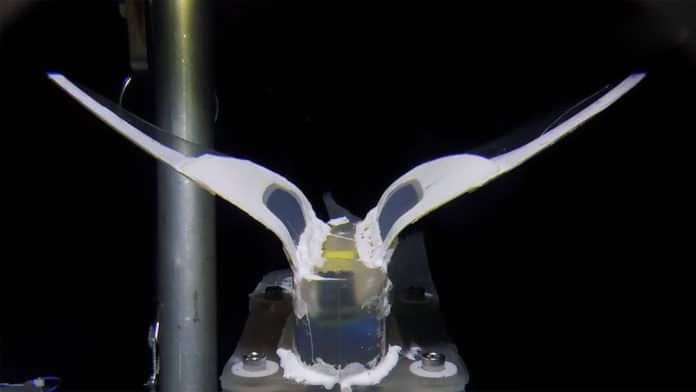The deep-sea remains the largest unknown territory on Earth because it is so difficult to explore. Due to extremely high pressures in deep seas, rigid vessels and pressure-compensating systems are usually required to protect mechatronic systems. However, deep-sea creatures that lack a bulky or heavily pressure-tolerant system can thrive at extreme depths thanks to their unique anatomies.
Inspired by the structure of a deep-sea snailfish, the joint research team from Zhejiang Lab (ZJ Lab) and Zhejiang University (ZJU) has developed an untethered soft robot for deep-sea exploration. The robot can work at extreme depths down to the bottom of the Mariana Trench. This self-powered robot eliminates the requirement for any rigid vessel.
In the new robot, fragile electronic components are embedded and distributed in a soft silicone matrix. Thus, the result is a design that does not require the use of high-pressure resistant housing. The shape of a fabricated bionic deep-sea soft robot is designed like a fish, which with a length of 22 cm and a wingspan of 28 cm, and the size of an A4 paper.
Fins and a tail are attached to its body, with the help of which it moves. The robot’s electronics are capable of withstanding strong pressure. To do this, the developers decentralize the electronics by increasing the distance between components or separating them from the printed circuit board.
Careful design of the dielectric elastomer material used for the robot’s flapping fins allowed the robot to be actuated successfully in a field test at a depth of 10,900 m in the Mariana Trench, which demonstrated its excellent pressure resistance. In the absence of a pressure-tolerant vessel, flapping actuation was maintained for 45 minutes. In a field test in the South China Sea, this soft robot successfully free swam at a speed of 5.19 cm/s with its flapping locomotion at a depth of 3,224 m.
The robot has extensive prospects for applications in mechanically abusive surroundings such as deep-sea areas, polar regions, and high-impact environments. In the future, the team will focus on developing new materials and structures to enhance the intelligence, versatility, maneuverability, and efficiency of soft robots and devices. This work highlights the potential of designing soft light-weight devices for use in extreme conditions.
